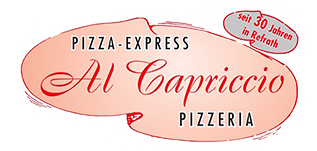Maintaining a pleasant atmosphere within a dwelling is paramount, especially in properties that have stood the test of time. The charm of classic architecture often comes with challenges related to climate control. An insightful approach to this issue is understanding how modern solutions can be seamlessly integrated into these structures. For those curious about effective enhancements, click here for more information.
Consideration for comfort goes beyond mere aesthetics. The systems responsible for regulating temperature and air quality can be outdated, leading to inefficiencies and discomfort. Homeowners can significantly improve their living environment by exploring contemporary technologies that provide better air circulation and temperature stability. Integrating advanced solutions can transform any space into a sanctuary, promoting relaxation and well-being.
Identifying Signs of Inefficient Heating and Cooling Systems
Recognizing the signs of ineffective temperature control systems can help in making informed decisions about necessary improvements. Homeowners may notice drafts in various areas, indicating heating gaps or insufficient insulation, which can contribute to discomfort and increased energy expenses. Duct leaks often lead to significant energy waste, as conditioned air escapes, causing systems to work harder to maintain desired temperatures. For more insight on improving HVAC efficiency, visit this resource.
Another indicator of outdated units is the inconsistency of temperatures across rooms. If certain spaces remain cold while others are overly warm, this may point to deficiencies in system design or airflow issues. Compliance with current building codes can also be a significant factor; older systems may not meet today’s standards, resulting in less energy conservation. Monitoring these symptoms is crucial to ensure a comfortable and energy-efficient living environment.
Understanding the Benefits of Modern HVAC Technology
Contemporary heating and cooling systems bring a plethora of advantages that enhance indoor comfort significantly. These advanced units are designed to meet code compliance, ensuring optimal performance while adhering to the latest regulations. Upgrading from outdated models not only improves air quality but also reduces energy consumption, leading to lower utility bills. For more information on this topic, you can visit https://comfortmastersair.com/.
One of the main benefits is the reduction of issues such as duct leaks and poor insulation, both of which can cause heating gaps in a property. Modern technology addresses these vulnerabilities by providing better airflow and more precise temperature control. As a result, indoor environments remain consistently comfortable throughout all seasons, minimizing the discomfort typically experienced with old systems.
Additionally, newer models are often equipped with smart technology, allowing homeowners to monitor and adjust their systems remotely. This capability not only adds convenience but also helps diagnose potential issues before they escalate, maintaining the integrity of your climate control system for years to come.
Evaluating Cost-Effectiveness of Upgrading Your HVAC System
Assessing the financial implications of enhancing your heating and cooling systems can significantly influence your decision-making process. One critical factor to consider is the presence of heating gaps and poor insulation, which can drive up energy bills. Addressing these issues may lead to a notable reduction in costs over time. To further explore the financial benefits of system improvements, check this resource.
Claim your free spins on https://comfortmastersair.com/ and boost your winnings.
Investigating duct leaks and outdated units is equally important. These deficiencies can cause considerable energy loss, diminishing indoor comfort even in optimal weather conditions. Modern units not only offer increased reliability but also comply with the latest code standards, ensuring safety and efficiency. Calculating the long-term savings versus the upfront investment becomes crucial in making an informed choice.
Each upgrade or replacement should be viewed as an investment in comfort, health, and efficiency. The return on investment often surpasses initial costs, particularly in areas where extreme temperatures are commonplace. Evaluating potential savings from improved energy use can help homeowners understand the real cost-benefit relationship associated with such renovations.
